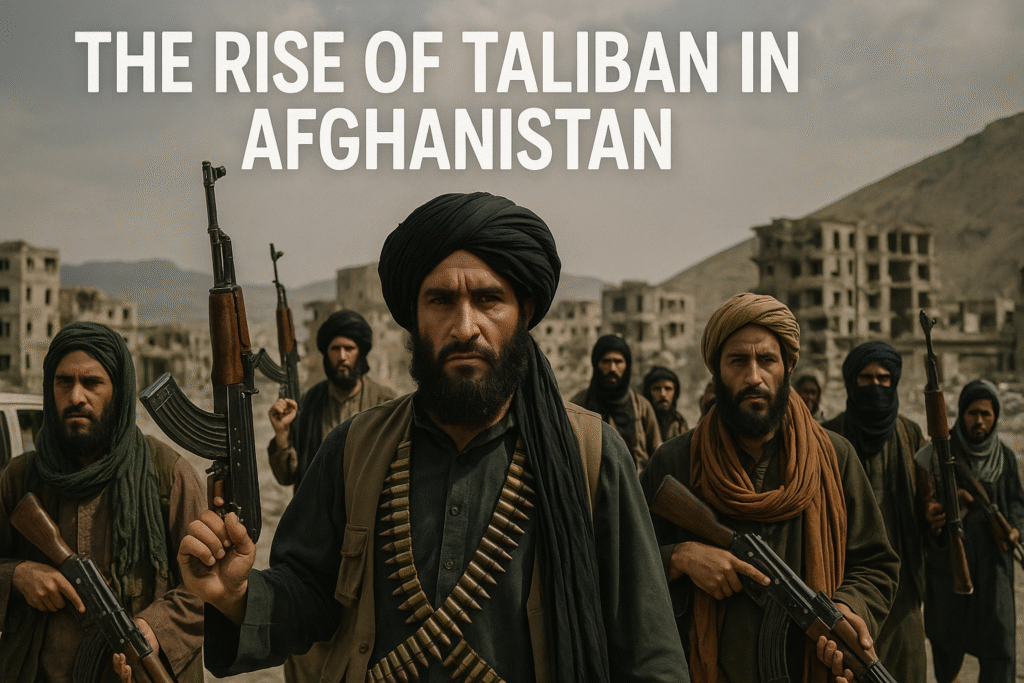The last century began with optimism but quickly fell into chaos. World War I from 1914 to 1918 devastated Europe, followed just two decades later by World War II. In the aftermath, the United Nations was created to safeguard peace. But global peace proved fragile. As the Cold War emerged between the United States and the Soviet Union, a new pattern of conflict took shape. Proxy wars replaced open battles, and terrorism began to rise as a tool of political coercion.
Afghanistan Becomes a Pawn in a Global Power Struggle
Afghanistan, with its strategic location in Central Asia, became a target for both Cold War blocs. In April 1978, the government of President Mohammad Daud Khan was overthrown by Marxist military officers loyal to the People’s Democratic Party of Afghanistan. Two factions within the party, Khalq and Parcham, briefly united to form a communist regime. They aligned closely with Moscow and introduced sweeping reforms, including land redistribution and restrictions on religious influence.
These policies, however, triggered massive backlash from Afghanistan’s conservative and largely Islamic society. By the end of 1979, the situation had spiraled. The Soviet Union, fearing the collapse of its new ally, invaded Afghanistan with over 100,000 troops.
The Mujahideen Launch a Holy War
The Soviet invasion was condemned globally. Within Afghanistan, resistance groups known collectively as the mujahideen began to organize. They were not just nationalist fighters but Islamic insurgents, many of whom saw the battle as a jihad against godless communism. The United States, Pakistan and Saudi Arabia began funding, training and arming these fighters. Through the CIA and Pakistan’s intelligence agency, billions of dollars in weapons and resources flowed into the country.
While Soviet troops held cities and major roads, the mujahideen dominated the rural terrain. The war became a stalemate. It also became one of the most violent conflicts of the 20th century.
The Soviet Retreat Marks a Turning Point
By the mid-1980s, the Soviet economy was under immense strain. The Afghan war, known as the USSR’s Vietnam, was bleeding resources with no end in sight. In 1988, the Geneva Accords were signed by the US, the Soviet Union and Afghanistan. The agreement called for the withdrawal of Soviet troops. That process was completed in February 1989.
The communist regime in Kabul, led by Najibullah, survived a few more years with Soviet aid but eventually fell in 1992. With no foreign enemy left, the mujahideen factions turned on one another.
Civil War Destroys Kabul and Fractures the Country
From 1992 to 1996, Afghanistan plunged into a brutal civil war. Rival mujahideen commanders shelled each other’s territories, especially in Kabul. The capital city, once full of life and learning, was reduced to rubble. Civilians were killed in large numbers. With no central authority, chaos became the norm.
It was in this lawless vacuum that a new force began to rise from the south.
The Taliban Emerges From the Rubble
The Taliban, composed mostly of young Pashtun students educated in religious seminaries across the border in Pakistan, promised to restore law, order and Islamic values. Their rise was swift. With support from Pakistan’s establishment and sections of the Afghan public tired of warlord rule, the Taliban captured Kabul in 1996 and established the Islamic Emirate of Afghanistan.
They enforced a strict interpretation of Sharia law. Women were banned from working or going to school. Music, art and television were outlawed. Public executions and amputations became common. Internationally, they were recognized by only three countries: Pakistan, Saudi Arabia and the United Arab Emirates.
Al-Qaeda Finds a Safe Haven
While the Taliban consolidated power internally, they also allowed foreign jihadist groups like al-Qaeda to operate freely on Afghan soil. Osama bin Laden, the mastermind behind several terrorist plots, found sanctuary under Taliban protection. Warnings were issued by various intelligence agencies, but little action followed.
Then came 9/11.
The United States Responds With Military Force
On September 11, 2001, the world watched in horror as the Twin Towers collapsed. Nearly 3,000 people were killed in coordinated terror attacks on American soil. The US government demanded the Taliban hand over Osama bin Laden. When they refused, a full-scale military operation was launched.
Within weeks, the Taliban regime collapsed. A new government was formed under American oversight. The US-led coalition launched Operation Enduring Freedom, aiming to eliminate al-Qaeda and prevent Afghanistan from ever becoming a terror hub again.
Two Decades of Occupation and Disillusionment
Despite billions spent on reconstruction and two decades of military presence, Afghanistan remained unstable. A democratic structure was introduced, but elections were marred by fraud, warlordism and corruption. Outside Kabul, the Taliban slowly regrouped. They regained ground, especially in rural provinces.
By 2010, the war had entered its second decade. Foreign troops were fatigued, the Afghan military remained weak and public support in the West was fading. Even as schools and roads were rebuilt, security remained elusive.
The Doha Deal and a Planned Withdrawal
In February 2020, the United States signed the Doha Agreement with the Taliban. Under the deal, the US promised to withdraw its troops. The Taliban pledged to prevent terrorist groups from operating on Afghan soil. The agreement did not include the Afghan government in any meaningful way.
When President Joe Biden took office, he extended the final withdrawal deadline to August 2021. By then, the Taliban had already begun advancing rapidly.
Kabul Falls Again, This Time Without a Fight
In August 2021, as US forces pulled out, province after province fell to the Taliban. Afghan troops surrendered with little resistance. On August 15, Taliban fighters entered Kabul. President Ashraf Ghani fled the country. The government collapsed. Just like that, the Islamic Emirate of Afghanistan was back in power.
It was the second time in 25 years that the Taliban had seized the capital.
Life Under the Taliban: History Repeating Itself
Since returning to power, the Taliban have imposed sweeping restrictions. Girls are banned from secondary and higher education. Women can no longer work in most sectors. Civil liberties have vanished. The press is censored. Dissent is crushed.
Millions face food shortages and poverty. Foreign aid, once a critical lifeline, has been frozen by most Western governments. Despite Taliban claims of moderation, life today resembles the darkest days of their 1996 regime.
Russia Steps Forward as the West Watches
In 2024, Russia officially recognized the Taliban government. “We believe that the act of official recognition… will give impetus to the development of productive bilateral cooperation,” said the Russian Ministry of Foreign Affairs.
China and Iran maintain informal ties. The United Nations remains split. No Western country has officially recognized the Taliban administration.
A Global Failure, Paid for by Afghan Lives
From 1979 to the present, an estimated 1 to 2 million Afghans have died in war-related violence. Millions more have been displaced. Generations have grown up knowing only bombs, checkpoints and broken promises.
Afghanistan today is not just a humanitarian crisis. It is a mirror reflecting the failures of global diplomacy, superpower greed and the cost of indifference.
The world may have moved on. But for the people of Afghanistan, history never stopped repeating itself.
Read More: Texas Flash Floods Claim 78 Lives, 41 Missing: Camp Mystic Hit Hard
Watch India Pakistan Breaking News on The Ink Post. Get Latest Updates, Latest News on Movies, Breaking News On India, World, Explainers.
Follow us on Facebook and Instagram and LinkedIn and Twitter to Stay updated!




